This article will cover how a user within FieldCentral will create and define Services within their company account.
Once the user has logged into FieldCentral, navigate to the Settings Page either via the Main Menu or the quick action panel.
Click on “Services”.
Then, click on “Services and Service Categories”.
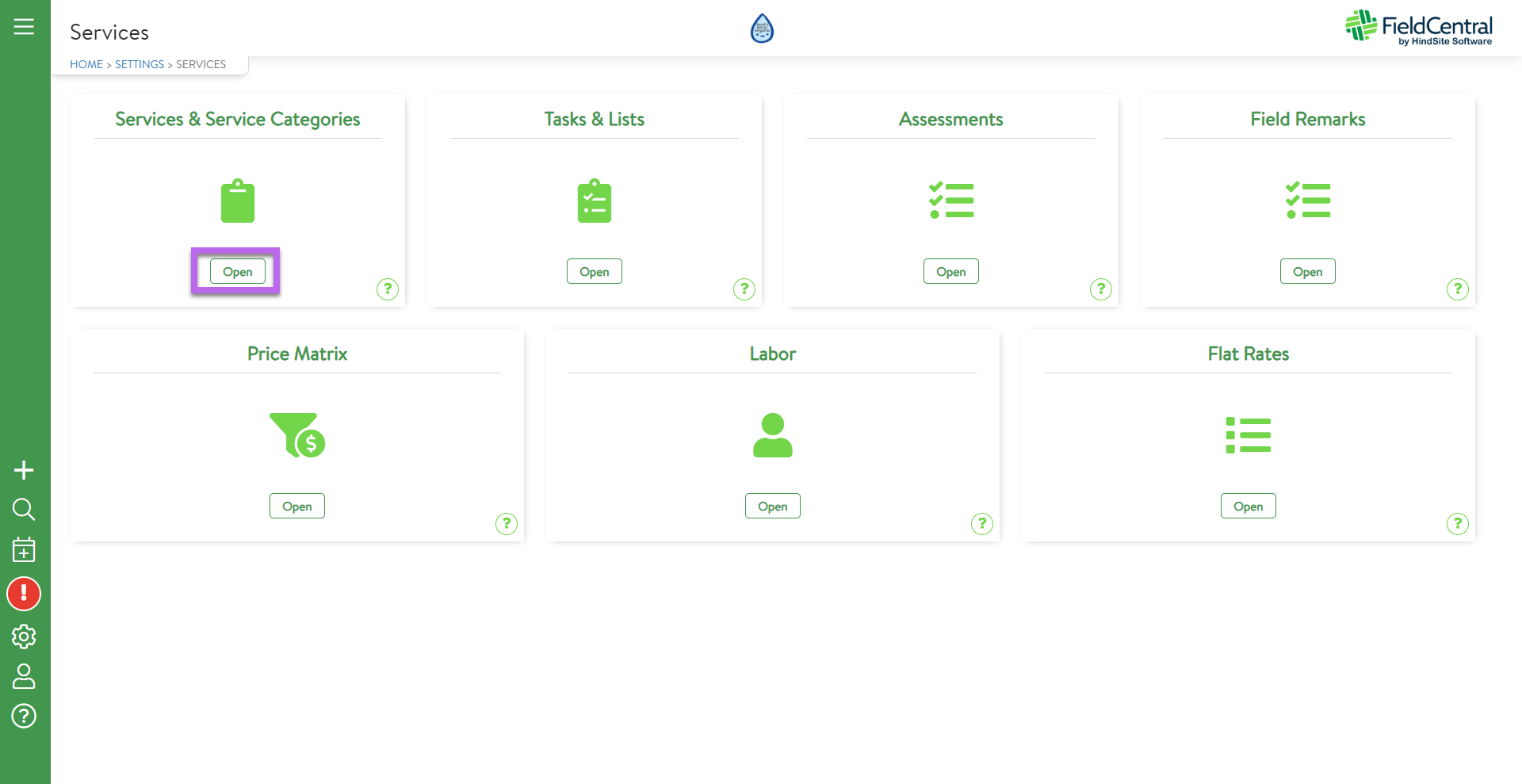
Expand the Service Category by clicking on the arrow to the far left of the screen. Click on the green plus button under the service category to add a new Service.
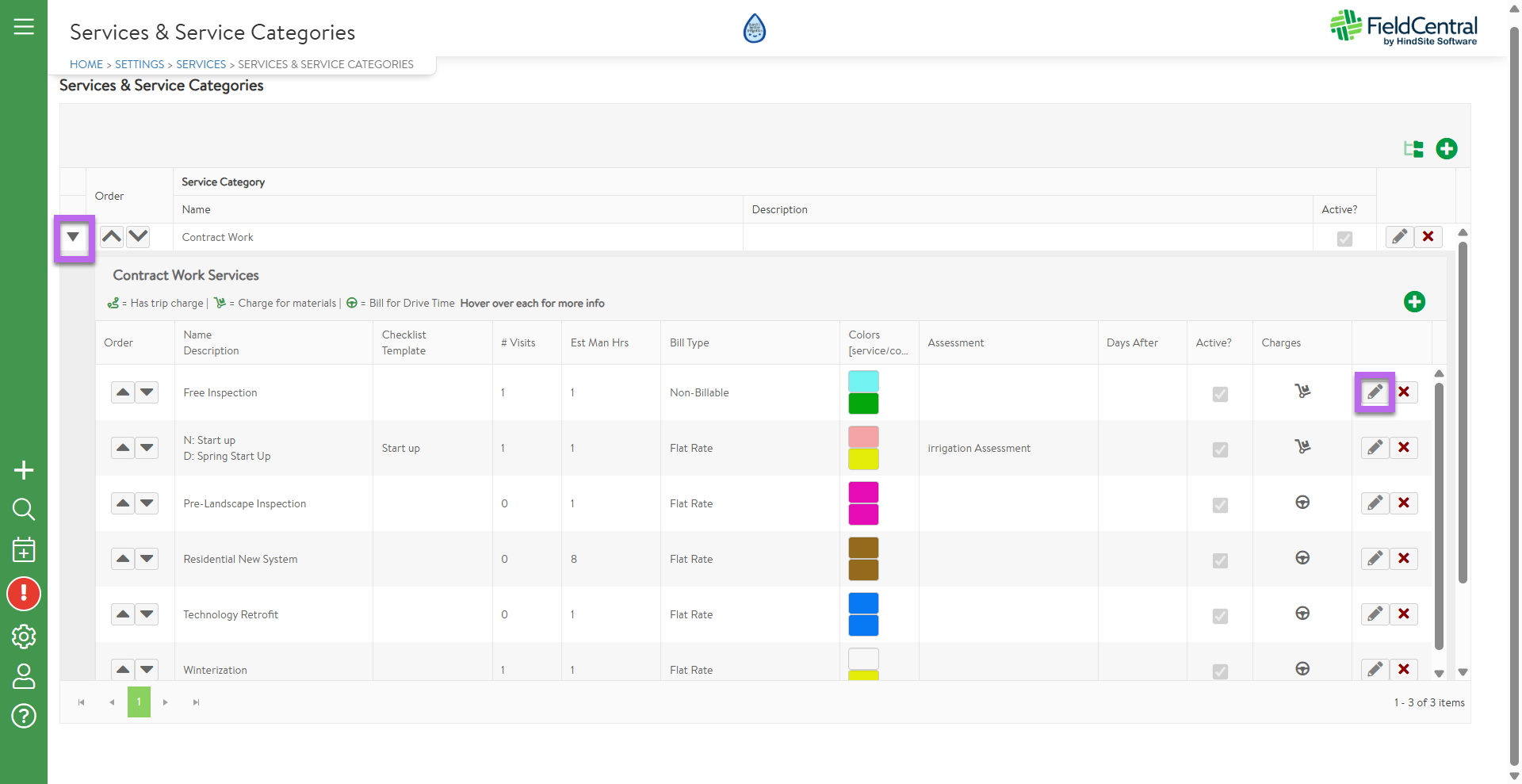
This is where the user will create and define the Service. For this article, we will split this window into three sections to help explain each element so the user can define their own as needed.
The first step will be naming the Service (EX: Start up). Then providing the # of visits which will be associated, which is typically 1.
The user can then add a description if they would like and if the work is taxable they will check that box.
QuickBooks Full name is how this Service will connect to QuickBooks when the invoices are sent over. QuickBooks Prepaid Line Item ties into contracts when the item is marked as prepaid.
***Prepayment Beta clients: this will need to match what is in QB in order to ensure that prepayment with estimate acceptance processes as expected***
If the user has an assessment they would like tied to the Service, they will select from the drop down provided.
Providing an Invoice Class will be helpful for reporting as this would be a larger bucket you would assign the specific Service. (ex. assign Start Up and Winterization to a "seasonal" class, assign Service Call to "repair" class, assign lighting to "lighting" class.)
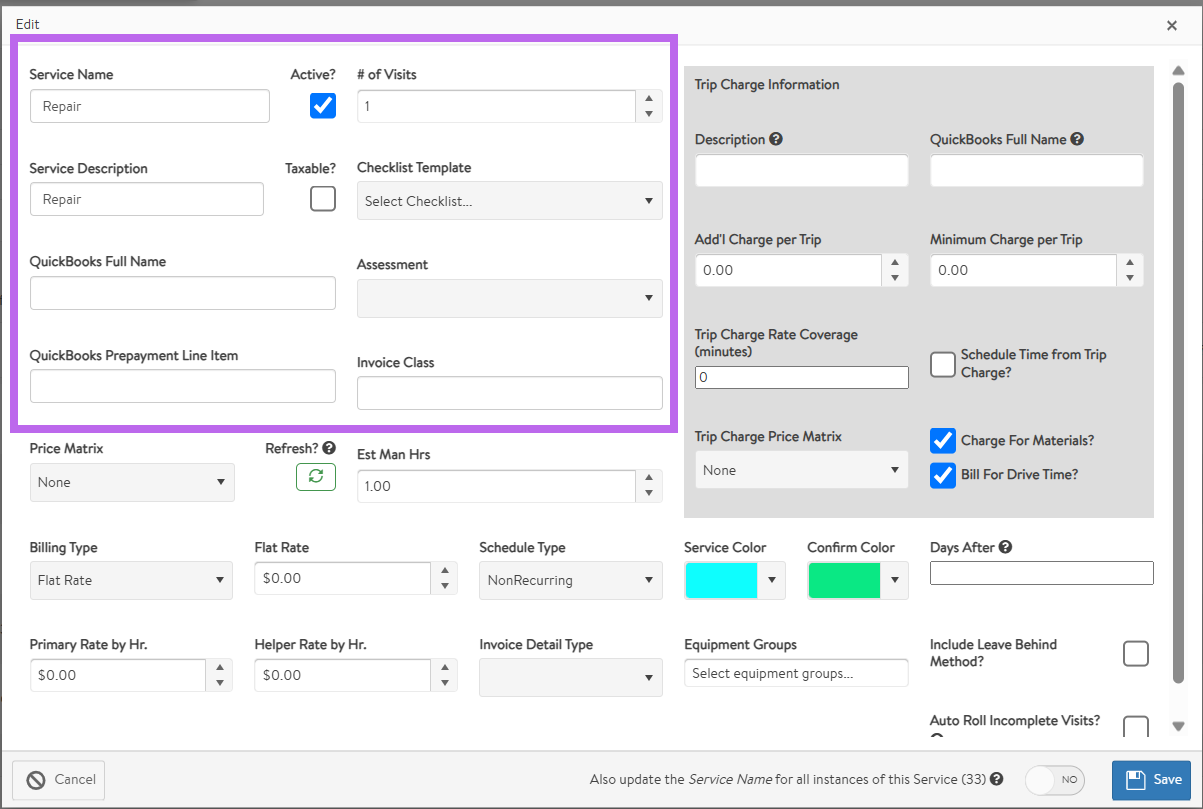
The next section we will go over will be the Trip Charge elements in the gray highlighted box on the top right.
Provide the trip charge name and description, if applicable.
- The additional charge per trip is the min flat rate to charge and the amount of time that charge covers (ex. $200 for the first 60 minutes then hourly rate after that).
- The min charge per trip is an overall minimum that doesn't specifically apply to a trip charge.
- Charge for drive time check box (if anything is filled out in the trip charge, that needs to be checked).
- Charge for materials checkbox, if charging for materials.
- Trip Charge Rate Coverage (minutes)
- Trip Charge Price Matrix (if assigning to a Price Matrix trip charge)
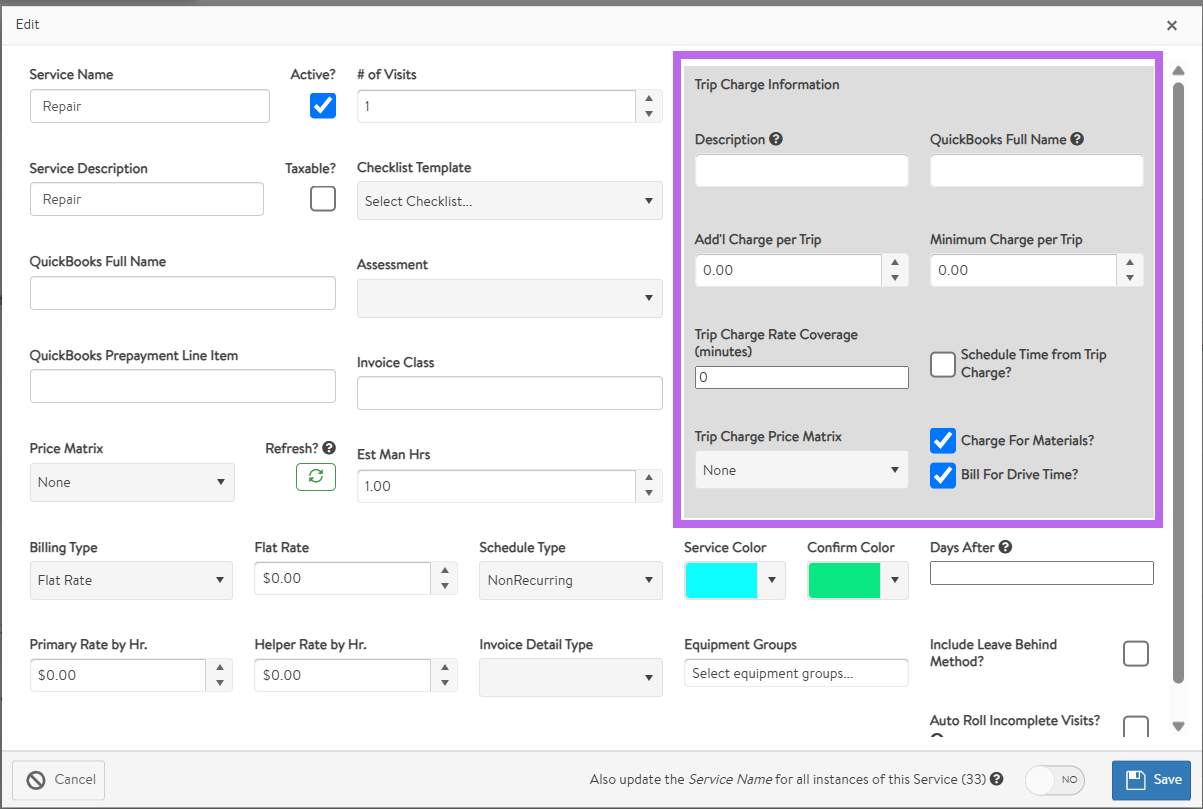
The final section will be covering the fields in the lower half of the window.
Price Matrix: assign the Service to an existing price matrix if desired
Est Man Hours is how long the visit should take/block off on the schedule.
For Billing Type the user has three options (1) non billable (will not create invoice), (2) flat rate (just one charge no matter how long it takes), and (3) time and materials (hourly rate).
Depending on if the user selects “flat rate” or “time and materials” the appropriate box needs to be completed below with the dollar amount. Helper rate by hour is the additional charge per hour for a helper tech on site. (ex: 1 tech at 100/hr but helper with tech is 150/hr. $100 would go in the rate per hour and 50 in the helper rate per hour).
*Lawn care only: Include Leave Behind Method.
If the user selects “Auto Roll Incomplete Visits”, any incomplete visits will move over to the beginning of the next day, Tuesday through Sunday. Sunday visits do not get moved to Monday
Schedule Type: recurring or non-recurring (mostly non-recurring for irrigation) *For lawn care they have to be recurring in order to use route builder*
Invoice Detail Types will determine what information shows up on the invoices in the description box
-
- Company time: how long techs were on site
- Company time with rates: how long techs were on site plus the hourly rate
- Time by rate types: breaks down primary rate and helper rate
- Time by rate types with rates: breaks down primary rate and helper rate
- Employee time in/out: will show the employee name and their exact time on site
Service color and CONFIRM color are used to differentiate the visits on the schedule with color blocks. They also show the same colors on the field app.
Equipment Groups: assign the Service to an equipment group based on the equipment needed to perform the service
Days after (lawn care) "chain" visits using days after. The start of the chain is 0 - then you can set each Service how many days it should be scheduled from the previous line. (Example: I want to fertilize lawns every 30 days, so I've set each round to come 30 days after the previous.)
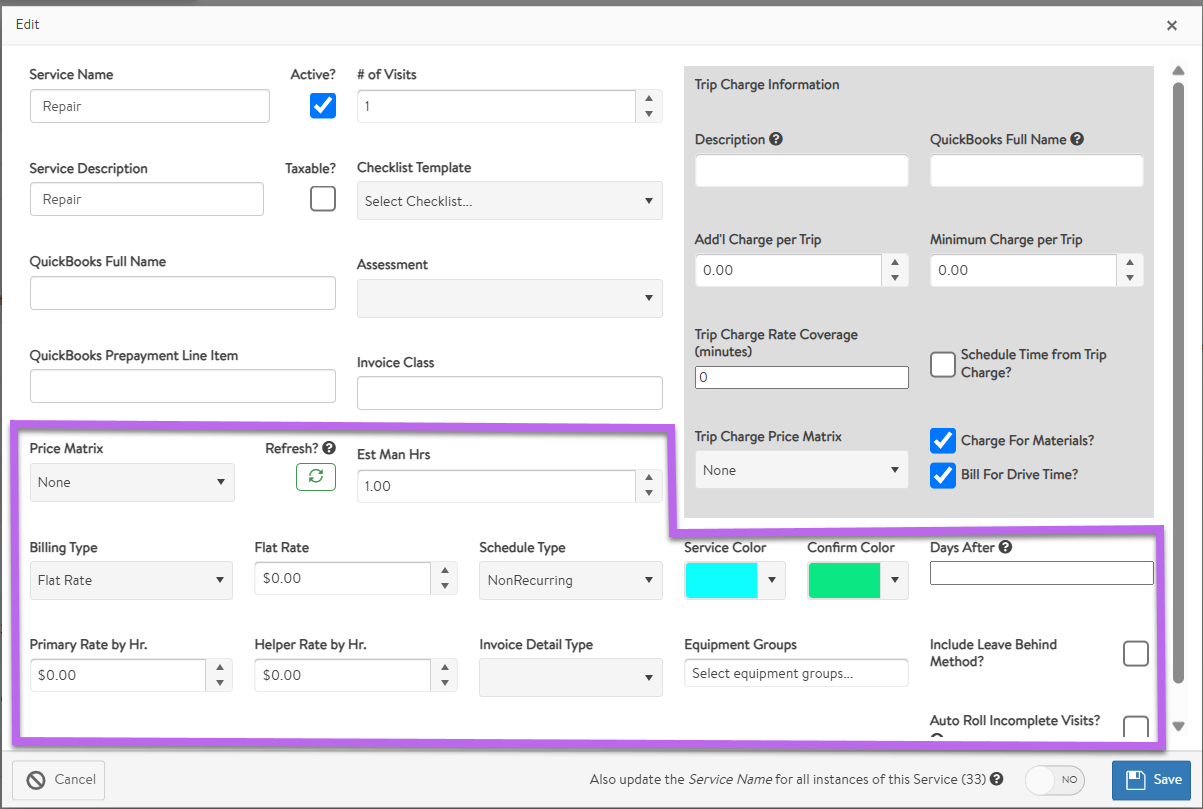
Once the user is satisfied with their selections they will click the “Create” button and the Service and its details will be saved.
Check out the quick video!
Reminder on FieldCentral Pricing Structure:
If there is no Price Override, the system will default to Property Level Pricing
If there is no Property Level Pricing, the system will default to Price Matrix values
If the Service does not have a Price Matrix, the Service Default (base) pricing will stand
